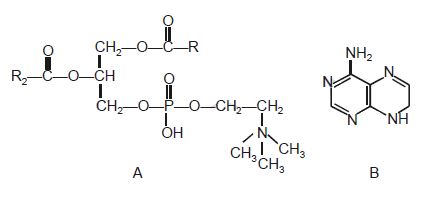15795.The curve given below show enzymatic activity with relation to three conditions (pH, temperature and substrate concentration). What do both axes (x and y) represent?


| x-axis | y-axis |
|---|---|
| (1) Enzymatic activity | Temperature |
| (2) Enzymatic activity | pH |
| (3) Temperature | Enzyme Activity |
| (4) Substrate concentration | Enzymatic Activity |
Option (1)
Option (2)
Option (3)
Option (4)
15796.One strand of DNA has the following sequence of nucleotide 3 ATTCGCTAT 5 so the other strand of DNA has
5 TAAGCGATA 3
3 TAAGCGATA 5
5 GACGCGATA 3
3 GACGCGATA 5.
15797.Feedback inhibition of enzymes is affected by which of the following
enzyme
substrate
end products
intermediate end products
15800.Which of the following is not a conjugated protein?
Peptone
Phosphoprotein
Lipoprotein
Chromoprotein
15802.The effectiveness of an enzyme is affected least by
Temperature
Concentration of the substrate
Original activation energy of the system
Concentration of the enzyme
15804.Specificity of protein in enzyme action depends upon
Active sites
Km constant
Linear sequence of amino acids
Turn over number
15807.Which one of the following structural formulae of two organic compounds is correctly identified along with its related function?


A : Lecithin - a component of cell membrane
B : Adenine - a nucleotide that makes up nucleic acids
A : Triglyceride - major source of energy
B : Uracil - a component of DNA
15808.An enzyme that joins the ends of two strands of nucleic acid is
polymerase
ligase
synthetase
helicase
15809.Enzymes, vitamins and hormones can be classified into a single category of biological chemicals, because all of these
Are exclusively synthesized in the body of a living organism as at present
enhance oxidative metabolism
Are conjugated proteins
Help in regulating metabolism
15810.The figure given below shows three velocity-substrate concentration curves for an enzyme reaction. What do the curves a, b and c depict respectively?


a-normal enzyme reaction, b-competitive inhibition, c-non-competitive inhibition
a-enzyme with an allosteric modulator added, b-normal enzyme activity, c-competitive inhibition
a-enzyme with an allosteric stimulator, b-competitive inhibitor added, c-normal enzyme reaction
a-normal enzyme reaction, b-non-competitive inhibitor added, c-allosteric inhibitor added
15812.The catalytic efficiency of two different enzymes can be compared by the
Molecular size of the enzyme
The pH optimum value
The Km value
Formation of the product
15813.In which one of the following sets of three items each belong to the category mentioned against them?
Lysine, glycine, thiamine — Amino acids
Myosin, oxytocin and gastric — Hormones
Rennin, helicase and hyaluronidase — Enzymes
Optic nerve, oculomotor, vagus — Sensory nerves
15814.Carbohydrates, the most abundant biomolecules on earth, are produced by
Fungi, algae and green plants cells
All bacteria, fungi and algae
Some bacteria, algae and green plant cells
Viruses, fungi and bacteria
